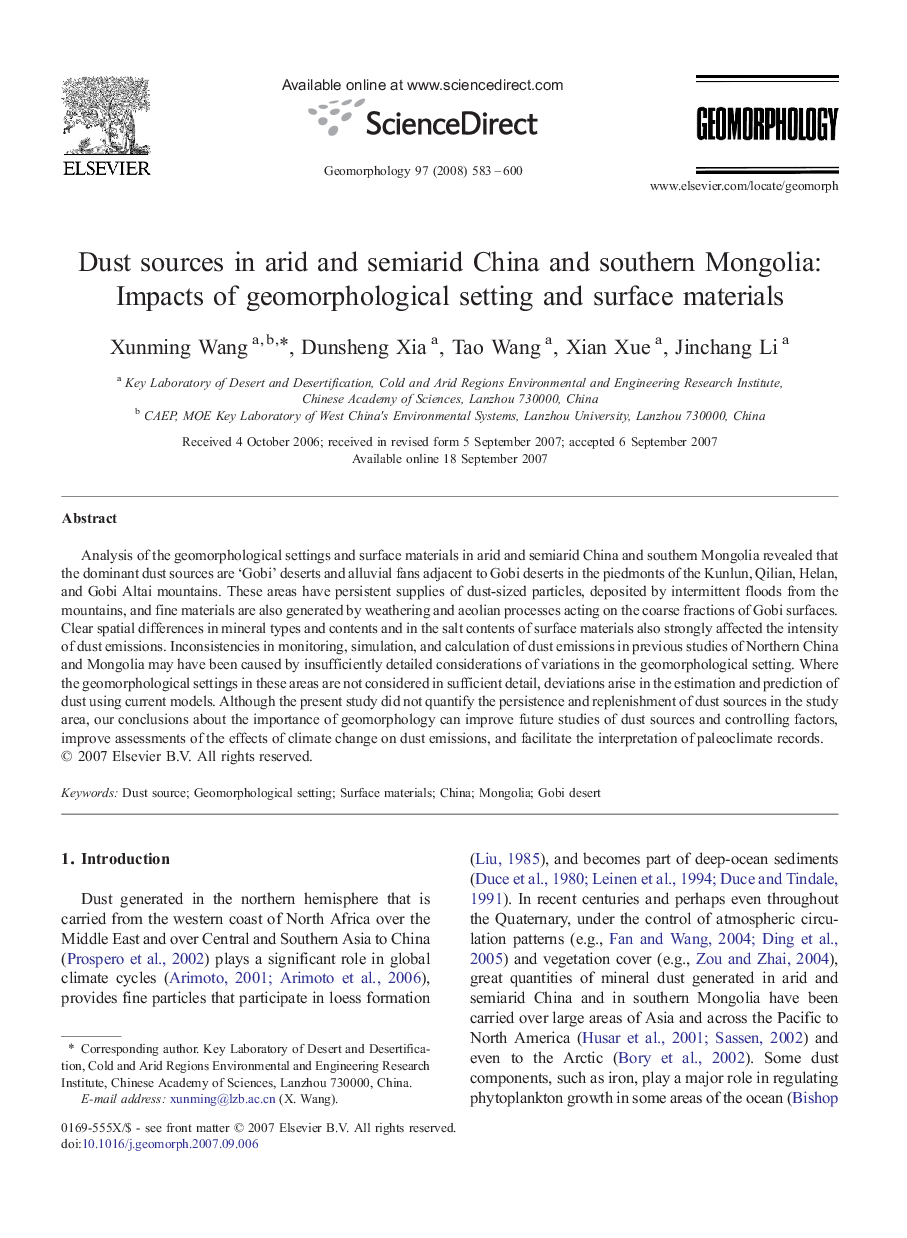| Article ID | Journal | Published Year | Pages | File Type |
|---|---|---|---|---|
| 4686798 | Geomorphology | 2008 | 18 Pages |
Analysis of the geomorphological settings and surface materials in arid and semiarid China and southern Mongolia revealed that the dominant dust sources are ‘Gobi’ deserts and alluvial fans adjacent to Gobi deserts in the piedmonts of the Kunlun, Qilian, Helan, and Gobi Altai mountains. These areas have persistent supplies of dust-sized particles, deposited by intermittent floods from the mountains, and fine materials are also generated by weathering and aeolian processes acting on the coarse fractions of Gobi surfaces. Clear spatial differences in mineral types and contents and in the salt contents of surface materials also strongly affected the intensity of dust emissions. Inconsistencies in monitoring, simulation, and calculation of dust emissions in previous studies of Northern China and Mongolia may have been caused by insufficiently detailed considerations of variations in the geomorphological setting. Where the geomorphological settings in these areas are not considered in sufficient detail, deviations arise in the estimation and prediction of dust using current models. Although the present study did not quantify the persistence and replenishment of dust sources in the study area, our conclusions about the importance of geomorphology can improve future studies of dust sources and controlling factors, improve assessments of the effects of climate change on dust emissions, and facilitate the interpretation of paleoclimate records.
